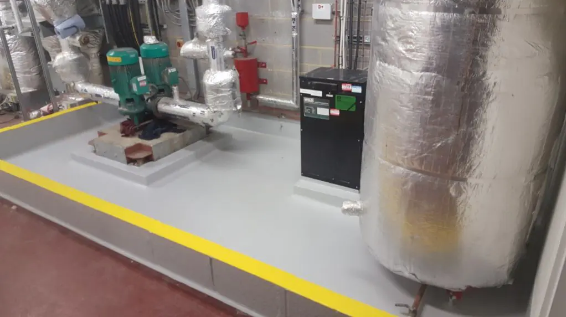A plant room bund plays a crucial role in ensuring safety, environmental compliance, and operational efficiency in facilities where liquid chemicals, fuels, or oils are stored or used. Often installed in mechanical and electrical rooms that house machinery like boilers, pumps, or generators, a plant room bund is designed to contain spills or leaks, protecting both workers and the environment from potential harm.
This article delves into the purpose, construction, regulations, and best practices associated with plant room bunds. Whether you’re overseeing industrial facility management or designing a new infrastructure project, understanding the importance of bunding systems can significantly enhance your risk management approach.
What Is a Plant Room Bund?
A plant room bund is essentially a secondary containment system, usually a barrier or wall, designed to capture and hold any hazardous liquids that may escape from tanks or equipment. The aim is to prevent these substances from seeping into the surrounding environment or drainage systems, which could lead to environmental contamination or safety hazards.
Bunds can be constructed from materials like concrete, polyethylene, or steel, depending on the specific requirements and the types of substances they are designed to contain.
Importance of Bunds in Plant Rooms
The installation of a plant room bund is not just a best practice—it is often a legal requirement under various health, safety, and environmental regulations. A well-designed bund system:
Also, explore All You Need To Know About Www.Travellingapples.Com
- Prevents environmental damage caused by chemical or oil spills
- Protects facility personnel by minimizing exposure to hazardous materials
- Helps organizations comply with regulations such as environmental protection laws
- Minimizes downtime and reduces liability in the event of an accidental spill
Design Considerations for Plant Room Bunds
When designing or evaluating a plant room bund, several factors must be taken into account to ensure effectiveness and compliance:
- Capacity: The bund must be capable of holding at least 110% of the largest tank’s volume or 25% of the total volume of all stored liquids, whichever is greater.
- Material Compatibility: The construction material must resist corrosion or degradation by the substances contained.
- Impermeability: The bund must be fully sealed to prevent leaks into the ground.
- Drainage Control: Any drainage or outlets should be lockable and only opened when safe to do so.
- Accessibility: The bund design must allow for inspection and maintenance, including cleaning and removal of spilled materials.
Maintenance and Inspection
Routine inspection and maintenance of a plant room bund are critical for ensuring it remains functional. Facility managers should conduct periodic checks for:
- Cracks or weaknesses in the structure
- Accumulated rainwater or waste liquids
- Blockages in drainage outlets
- Signs of chemical damage or erosion
Maintaining a bund in optimal condition is vital for long-term safety and regulatory compliance.
Common Applications of Plant Room Bunds
Plant room bunds are commonly used in:
- Hospitals and commercial buildings housing HVAC systems or generators
- Manufacturing plants with chemical processing or fuel storage
- Power stations where oil-filled transformers are installed
- Wastewater treatment plants using hazardous treatment chemicals
In each case, the bund functions as a protective measure against unforeseen leaks and system failures.
FAQs About Plant Room Bund
- Why is bunding necessary in a plant room?
Bunding is essential to contain spills from tanks and equipment, preventing harm to people, property, and the environment. - What should the bund capacity be in a plant room?
A standard bund should hold at least 110% of the capacity of the largest container it surrounds, though exact requirements can vary based on regulations. - What materials are used to build a plant room bund?
Common materials include concrete, polyethylene, and steel—chosen based on their chemical resistance and structural durability. - How often should bunds be inspected?
Visual inspections should be conducted monthly, with more thorough assessments at least once a year or as required by local laws. - Can plant room bunds handle rainwater or external leaks?
They can, but they must include proper drainage systems to remove uncontaminated water without compromising containment capabilities.
Conclusion
A plant room bund is an essential part of any industrial safety and environmental protection strategy. By containing spills and leaks, bunds help prevent contamination, reduce health risks, and ensure compliance with local and national regulations. Proper design, routine maintenance, and an understanding of best practices are key to ensuring that these containment systems remain effective over time. If you manage or work in a facility that handles potentially hazardous substances, investing in a well-constructed and maintained plant room bund should be a top priority for long-term safety and operational integrity.


